Almost exactly 10 years after my first visit, I have finally made it back to Japan. Call me a basic bitch, but like so many other people, it’s one of my favourite places in the world. And whilst 18 days there wasn’t nearly enough, I did use this time to get some serious eating done. Some of it is Michelin-recommended (though none of them are Michelin-starred – I prefer to spend my time abroad exploring local cuisine that I can’t get back home), some of it is internet-famous, and a lot of it is just tasty-looking things I happened to run across. And with Japan being what it is, almost all of it is delicious. And don’t even get me started on the konbini (convenience store) food – iykyk, and I could start a whole other blog reviewing its many delights.
Shin-Yokohama Ramen Museum
2 Chome-14-21 Shinyokohama, Kohoku Ward
Yokohama, Kanagawa 222-0033
https://www.raumen.co.jp/english/
The Shin-Yokohama Ramen Museum (not to be confused with the Instant Ramen Museum in Minato Mirai) was one of the highlights of my previous Japan trip. Now that I’m 10 years older, the interior designed to mimic Japan in the 1950s at dusk feels a little less awesome and a smidge more tacky. It is however still very cool, and a great place to try a variety of ramens without the run-around. A couple of things worth noting: the restaurants require each person to order at least one bowl of noodles, but they do come in a smaller size, so most people should be able to down at least a couple without issues. But as a result, eating here also naturally becomes a bit pricier than hitting up your usual ramen-ya. If you’re a ramen-enthusiast however, it’s still very much worth a look-in, and plenty of locals seem to be stopping in on the way home from work for their favourite bowl too.
Rating: 14/20 – ramen for the lazy soul.
Best restaurant: honestly, they’re all good – it just depends on what sort of ramen you’re partial to.
Genkotsu-ya
Aside from the regulars, the Ramen Museum features a rotating cast of visiting restaurants, and Genkotsu-ya is one of them. Founded in 1980, the drawcard here is ‘double soup’ – which blends a white stock of chicken and pork, with a traditional Japanese stock of tuna and kombu.
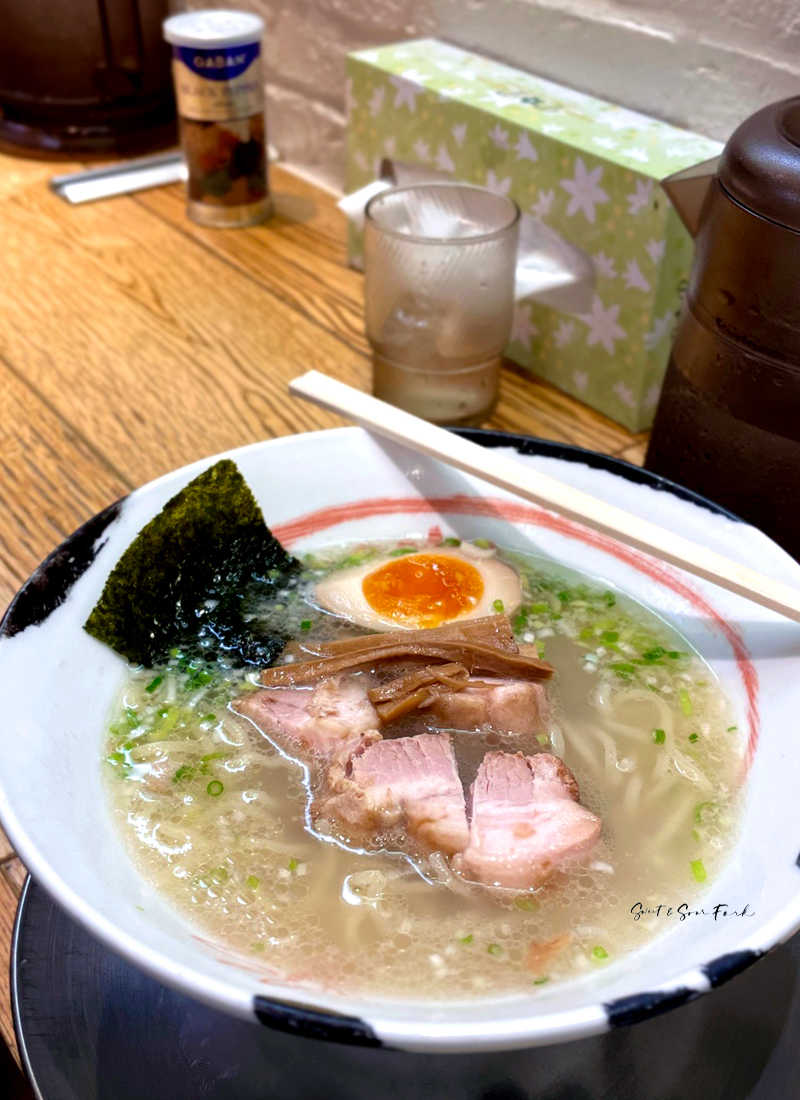
Tonkotsu Shoyu (650 yen, small)
The Tonkotsu Shoyu (650 yen, small) is phenomenal. So light but such depth of flavour – exactly what you’d expect from the double broth. It goes well with the chewy noodles, which are medium-thick in order to hold up against the richness of the broth without overwhelming the natural delicacy.
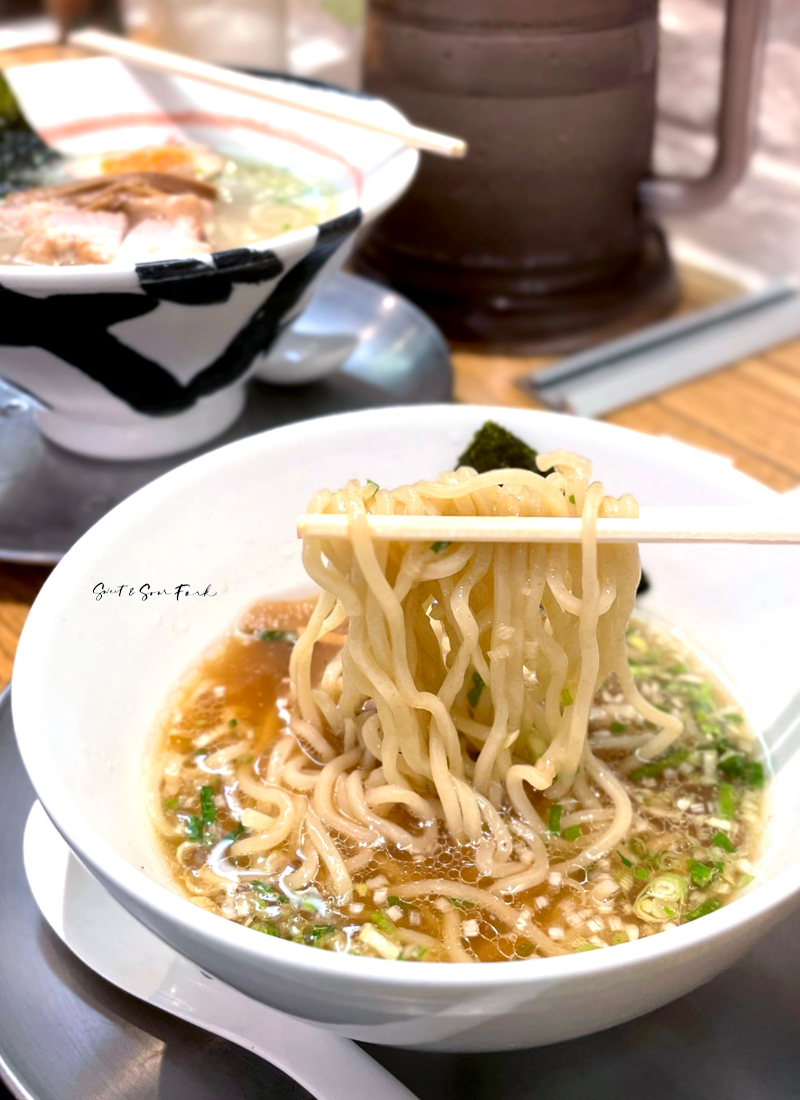
Special Shio Ramen (1300 yen, regular)
The Special Shio Ramen (1300 yen, regular) is much lighter and cleaner by comparison, however the stock still carries the richness of chicken and pork. The highlight here is the charshu, which are carved up into thick chunks, and are decadently fatty.
Ryu Shanghai Hinten
On the other hand, Ryu Shanghai Hinten is a permanent fixture here, serving up a super rich broth of pork and chicken, blended with sardines, and topped with a dollop of spicy miso. The thick, hand-kneaded noodles here are, according to the brochure, ‘voluminous… and super springy’.
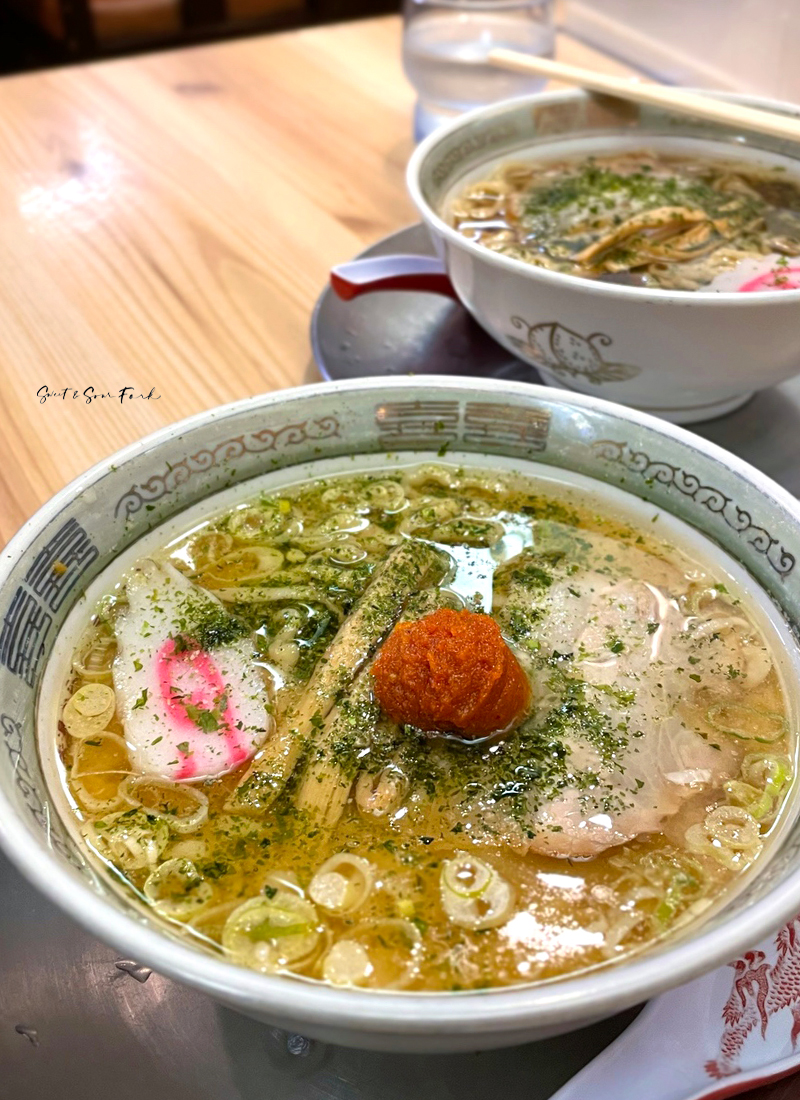
Spicy Miso Ramen (680 yen, small)
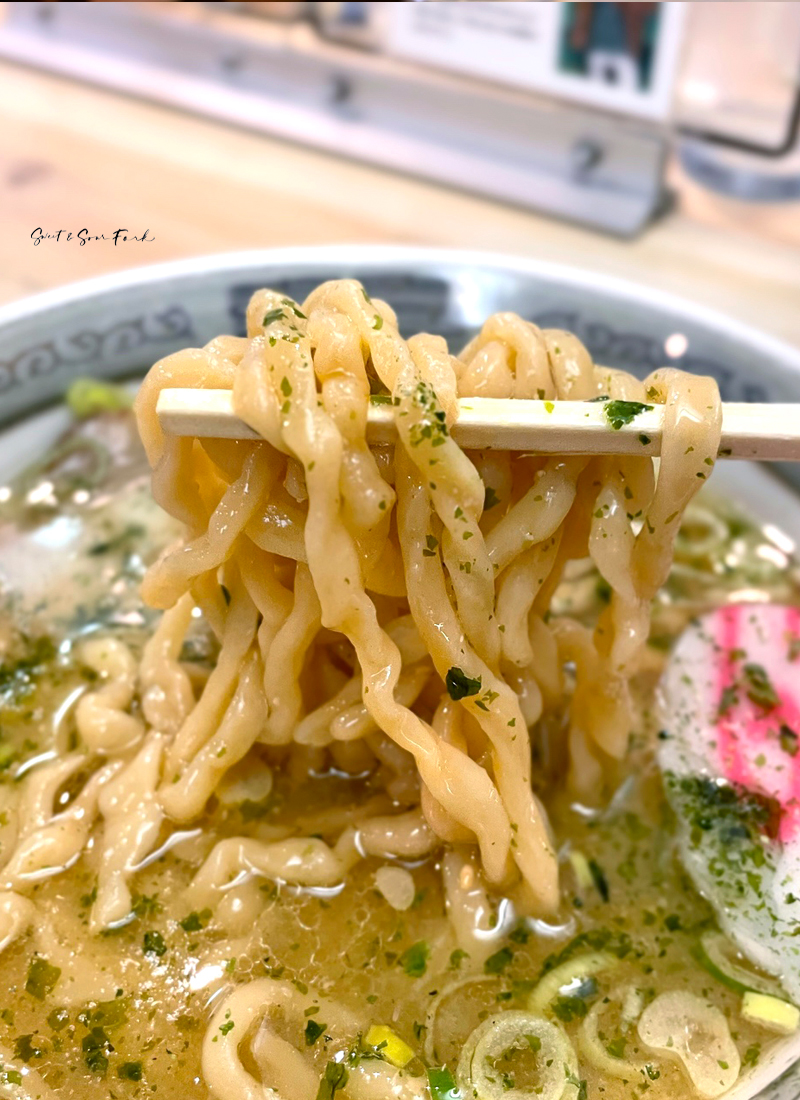
Spicy Miso Ramen (680 yen, small)
The signature Spicy Miso Ramen (680 yen, small) is heavy. Viscous in both appearance and mouthfeel, there’s no getting around the slick of oil on the surface. Unsurprisingly, this hits the extremes of umami, so it’s just as well that the dollop of red miso provides a peppery funk in contrast to the wall of richness. In true Japan fashion however, despite the soup’s heft, no one could accuse it of being imbalanced.
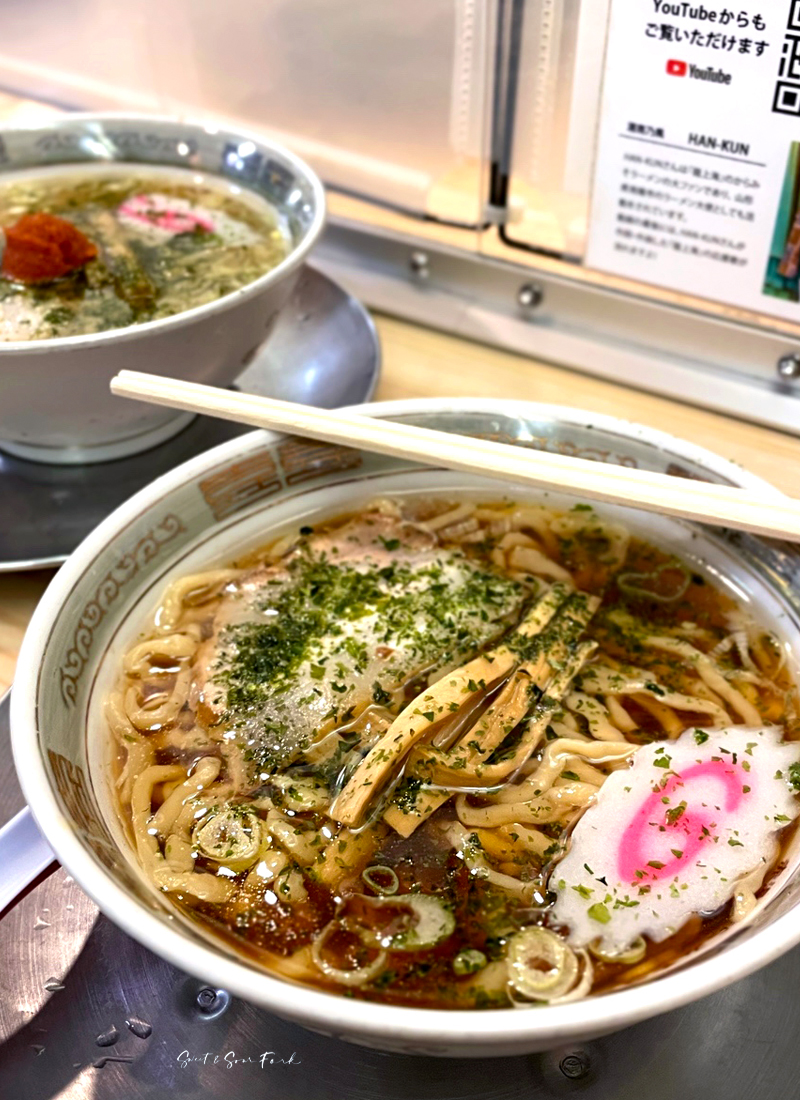
Soy Sauce Ramen (650 yen, small)
The Soy Sauce Ramen (650 yen, small) is thankfully not so heavy, the kelp-based soup packing all the umami without the fattiness. The thick noodles really shine here, the dark smokiness of the soup really highlighting the wheaty aroma of the noodles, as well as its characteristic alkaline flavour.
Centre Grill
1 Chome-9 Hanasakicho, Naka Ward
Yokohama, Kanagawa 231-0063
Yoshoku refers to Western-influenced Japanese food, and whilst most people are familiar with croquettes and curry, the genre extends much more widely (and becomes much more inexplicable) than that. We’re talking spaghetti with tomato sauce (as in, ketchup), capsicum, and sausage (as in, little red frankfurters), eaten as an honest-to-goodness meal by adults. And one of the best places to try this stuff out is Centre Grill, which has been around for 1946.
Rating: 12/20 – good to try, but don’t get too excited about the actual food.
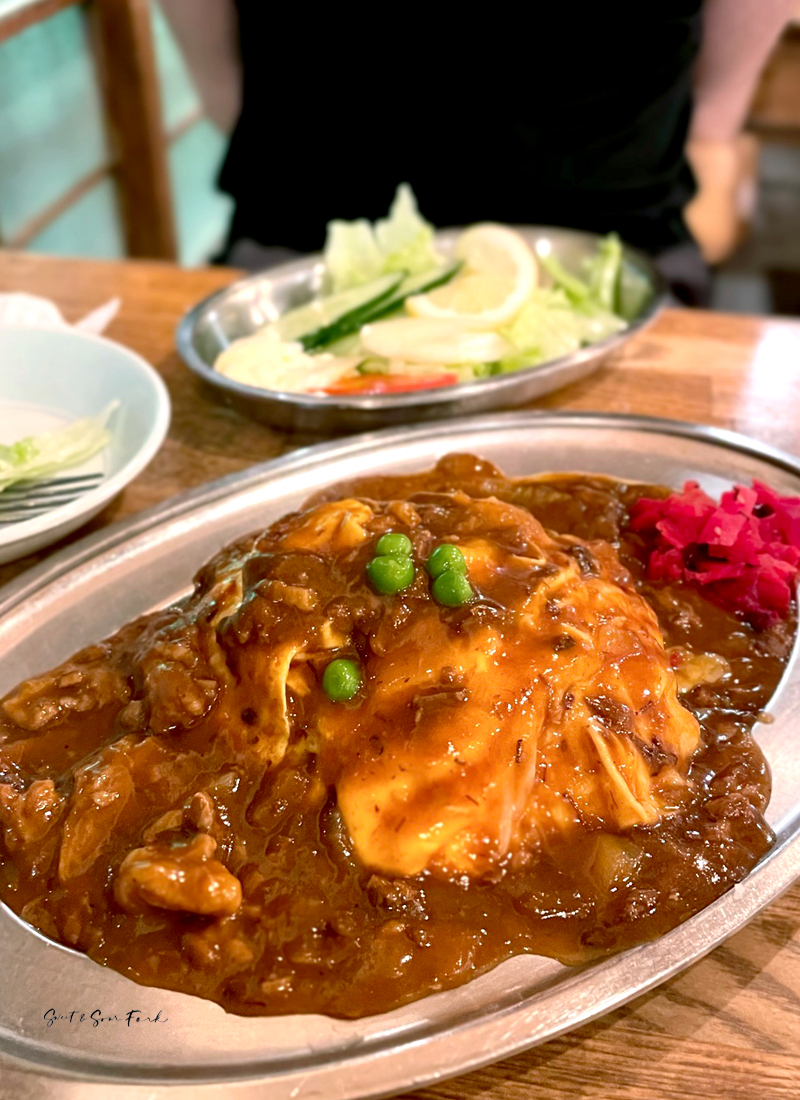
Omelette Hashed and Rice (930 yen)
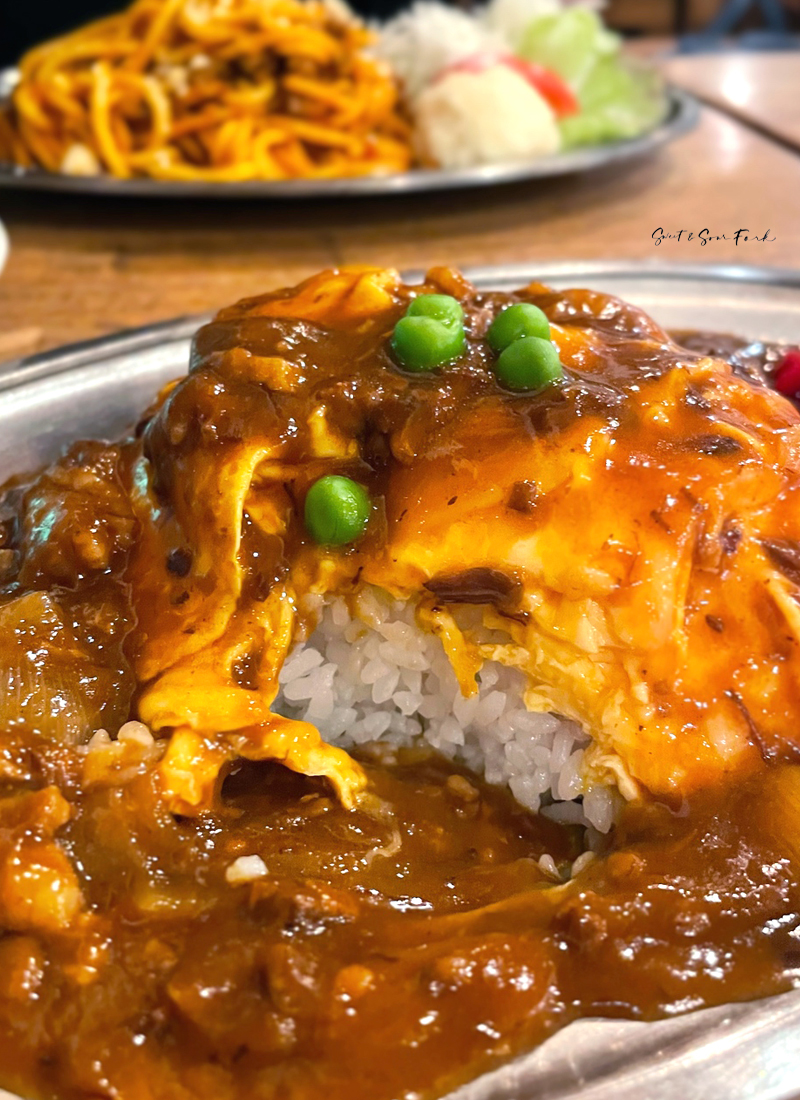
Omelette Hashed and Rice (930 yen)
I adore Hayashi rice – a dish of beef stew in a thick, slightly sweet and tangy demi-glace sauce, so the Omelette Hashed and Rice (930 yen). And listen, it’s a case of ugly-delicious here. This may not be much to look at, but the fluffy rice wrapped in tender egg omelette, and drowned in an enormous ladle of sauce, is as good as comfort food gets.
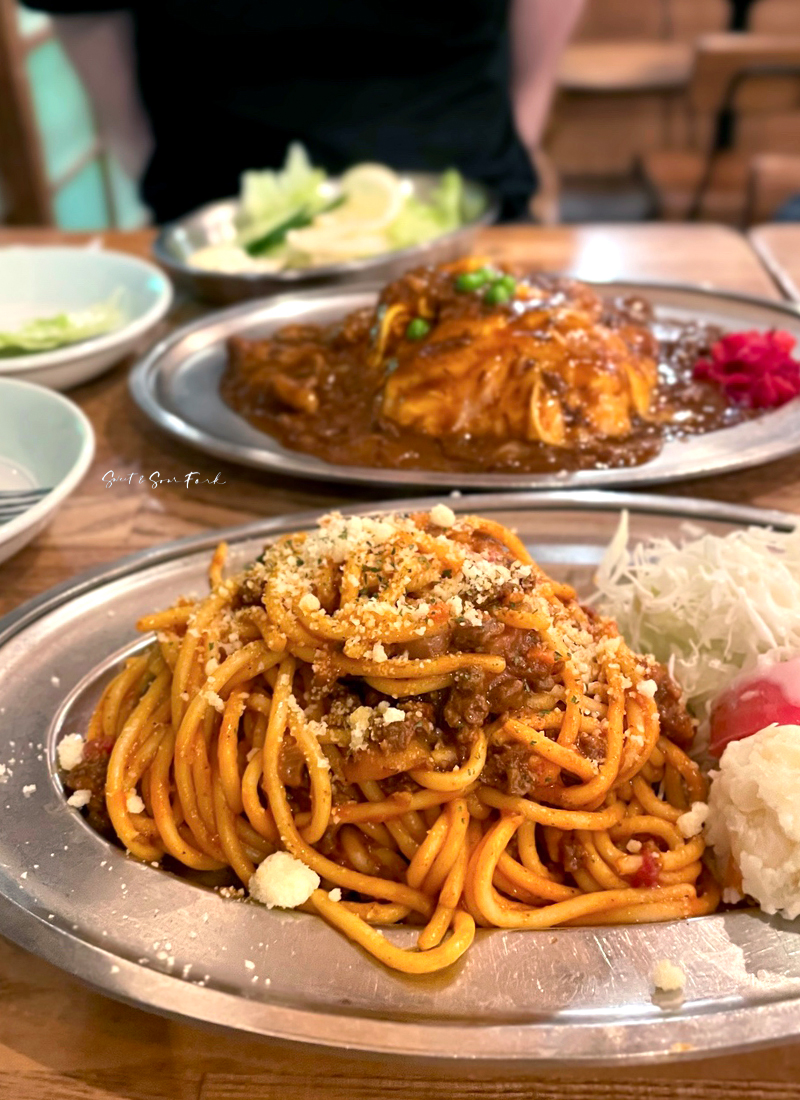
Spaghetti Broness (980 yen)
With Yokohama being the home of Pasta Napolitan (aka that monstrous concoction I described at the start), I felt obliged to try one of the pasta dishes. I couldn’t quite bring myself to get to OG, so I settled instead on the Spaghetti Broness (980 yen) which yes, is meant to be Bolognese. The sauce is a touch sweeter and tangier than you’d expect, but otherwise it is a tasty rendition of ‘bad’ spaghetti. With its slightly over-cooked noodles and simple sauce, it reminded me of eating lunch at a friend’s house in the 90s. Is it good? Not really. But did I enjoy it? Very much so.
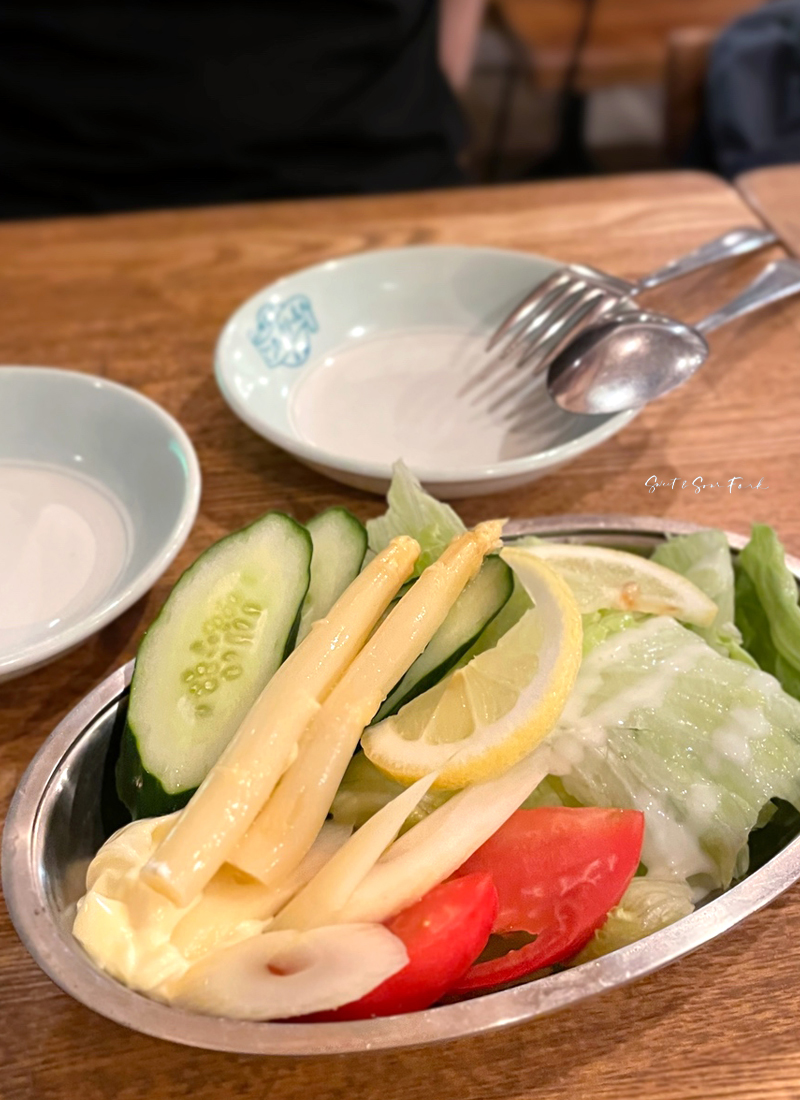
Season Salad (600 yen)
The Season Salad (600 yen) was not good at all, not even in a nostalgic, ironic way. For almost the price of a main, you get a small dish of the most anaemic-tasting vegetables in existence, which is then further downgraded by canned celery and asparagus, and a drizzle of mayo. Truly horrific.
Yokohama Nakaya Oozeki Honten
B2 Joinus Yokohama
1-5-1 Minami-saiwai, Nishi Ward
Yokohama, Kanagawa 220-0005
http://www.soba-udon.jp/oozeki/
We all know udon, but I’ve never heard of kishimen – a thinner, flatter variety of the thick, chewy noodle. So of course, Yokohama Nakaya Oozeki Honten became a must-try. Unfortunately it was much too hot for their other signature – the miso-ni, aka simmered miso udon. But never mind; the cold versions were equally as delicious, not to mention the surprise hit that was the miso katsu rice bowl.
Rating: 13/20 – an udon for all seasons.
Must-order: the miso katsu don!
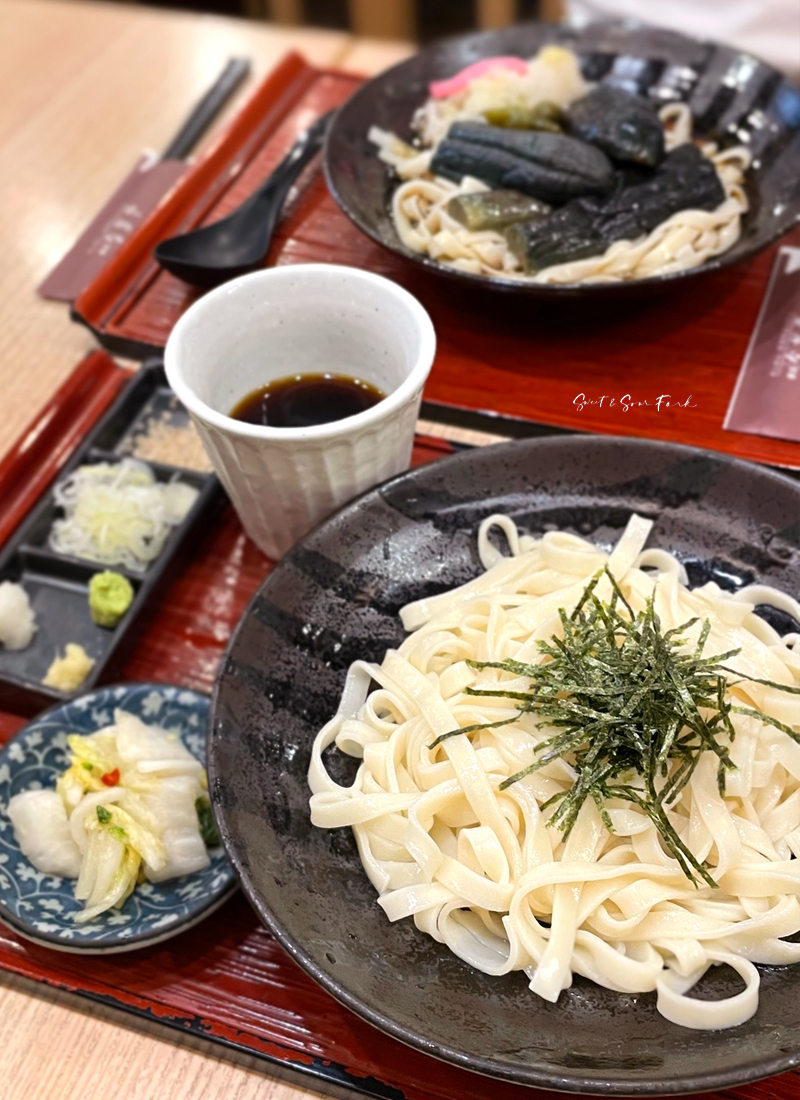
Zaru Kishimen (830 yen)
If you’ve had soba, you’ll be familiar with the Zaru Kishimen (830 yen), which is a delicious cold dipping-styled noodle. With a light yet robust stock layered with kombu and bonito, this is a satisfyingly refreshing way to get your noodle on in the heat, and really lets the beautifully chewy texture of the hand-made udon shine.
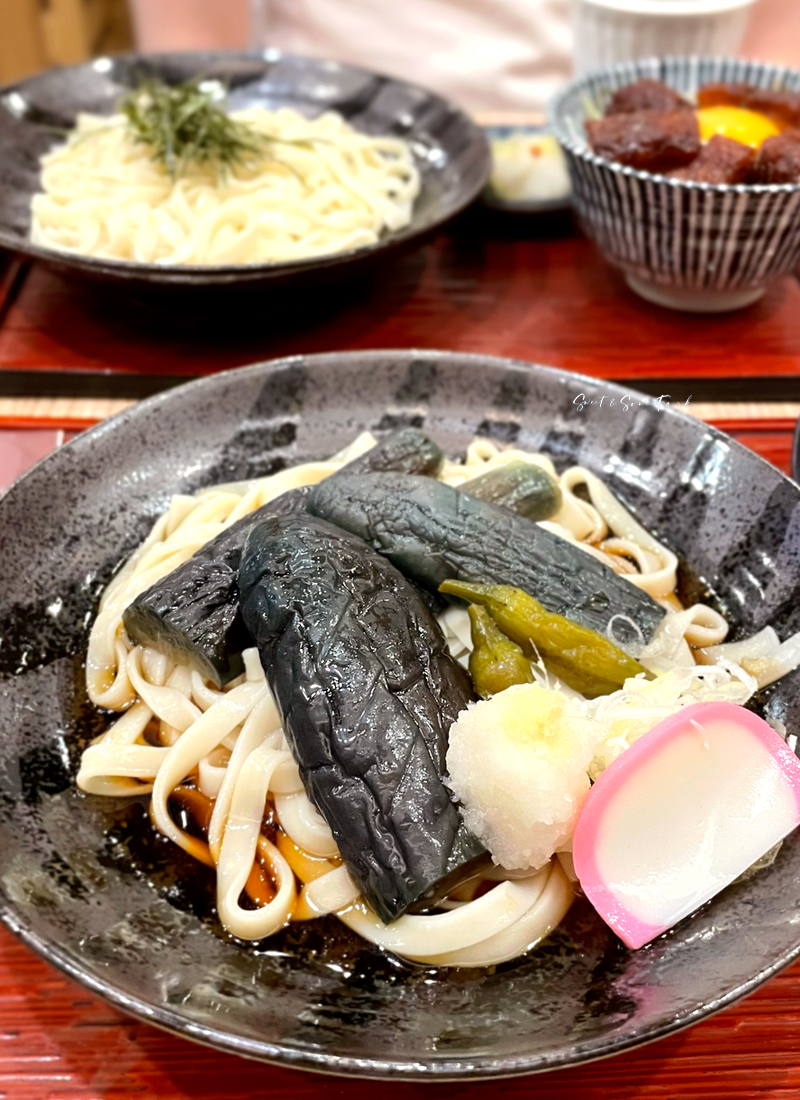
Boiled Eggplant Chilled Kishimen (1250 yen)
Despite the many options on offer, for some reason I was taken with the Boiled Eggplant Chilled Kishimen (1250 yen). Maybe I’m just trying to make up for the lack of vegetables that pervades this entire trip. Anyway, despite the uninspiring name and appearance, this was actually great. The eggplant was actually plump and full of flavour, and made for a hearty meat-alternative.
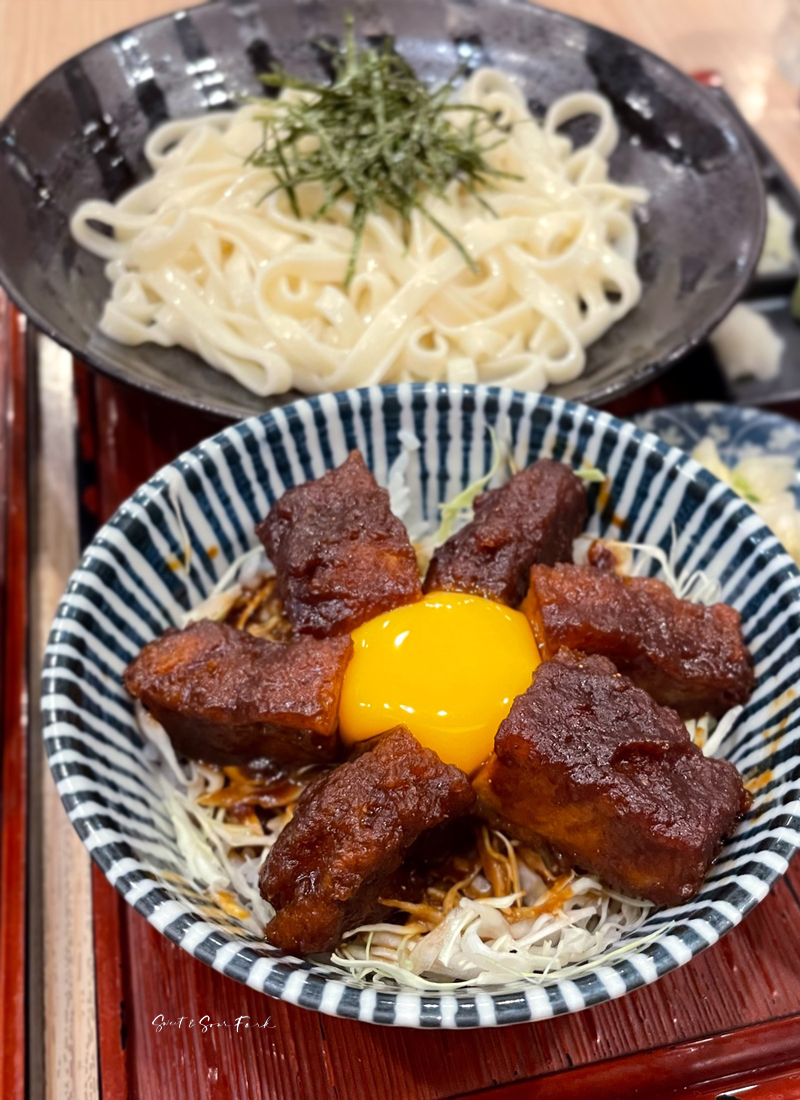
Miso Katsu Don (450 yen)
It’s not uncommon to order your noodles in Japan with a small rice bowl of some sort, but the Miso Katsu Don (450 yen) actually turned out to be the highlight of the meal. The juicy cutlet slathered in the rich red miso was packed full of rich, earthy umami, and the bonus egg yolk was the best of condiments. Even the plain rice on the bottom was delicious when mixed with the left-over sauces.
Yokohama Chinatown
Yamashitacho, Naka Ward
Yokohama, Kanagawa 231-0023
Yokohama is the host to the biggest Chinatown in Japan, and as a result, is a popular place for tourists. There’s definitely some great street food here, but here is the problem – the whole street serves about the same 8 things over and over again. It’s a great vibe and worth a visit; just don’t be expected to be overwhelmed by the food options.
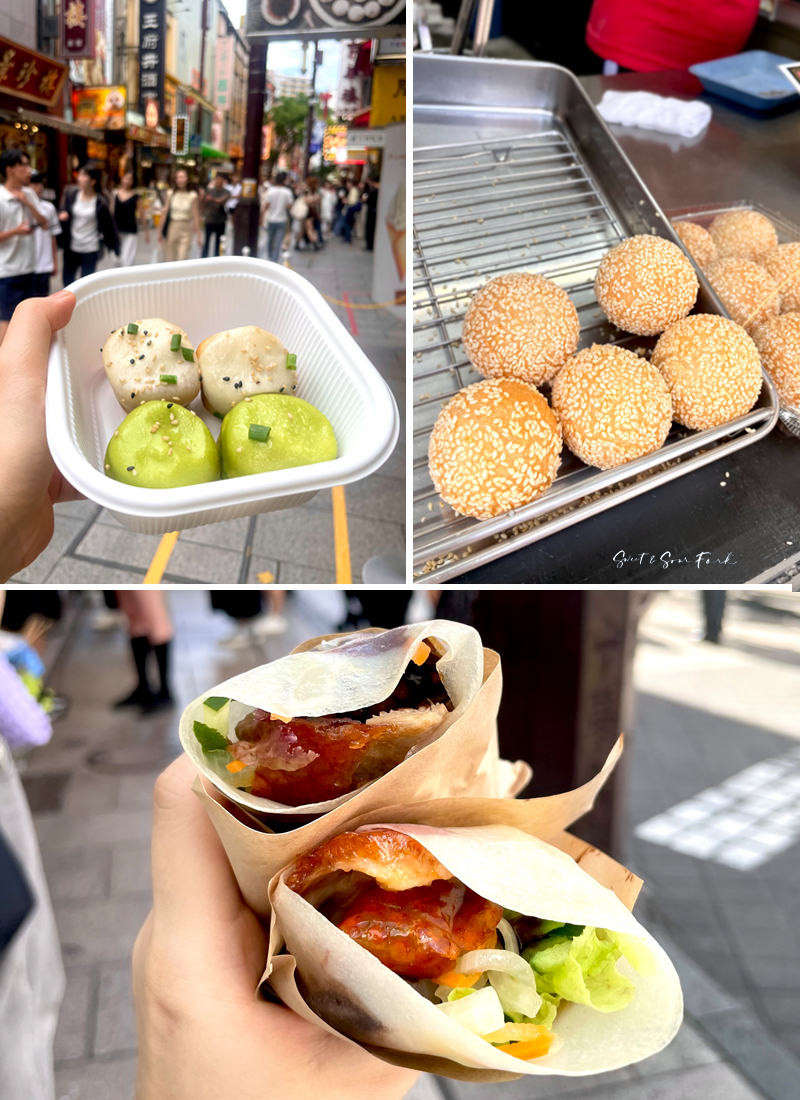
Fried Pork Buns (750 yen, 4 pieces)/Sesame Balls (150 yen)/Peking Duck Pancakes (300 yen)
One of the most popular things to eat here are the Fried Pork Buns (750 yen, 4 pieces), with almost every other shop advertising it with the same stock photo. Given that most of them looked the same, I just picked a place that had good turnover. If you’re going to get one thing, make it this, because you won’t get anything quite like it in Australia. Sure, pan-fried buns are dime-a-dozen, but they’re usually big, fluffy things. This on the other hand is basically a pan-fried XLB, which provides the best of both worlds – a golden, crispy bottom, as well as thin delicate skin. The soupy centre is also great, as long as you’re more careful than I was. Anything more than the most delicate of nibbles will ensure the scalding soup comes shooting out – funny to watch when you see it happen to others on the street, not so funny when it burns your own hand.
Red Brick Warehouse
1 Chome-1 Shinko, Naka Ward
Yokohama, Kanagawa 231-0001
Located in Minato Mirai, near the Cup Noodle Museum and Cosmo World on the waterfront, Red Brick Warehouse is a popular tourist destination. Not only are there plenty of shops selling local artisanal goods, there’s also a fair selection of international restaurant and cafes (including, interestingly enough, a branch of Bills), and the occasional art exhibit.
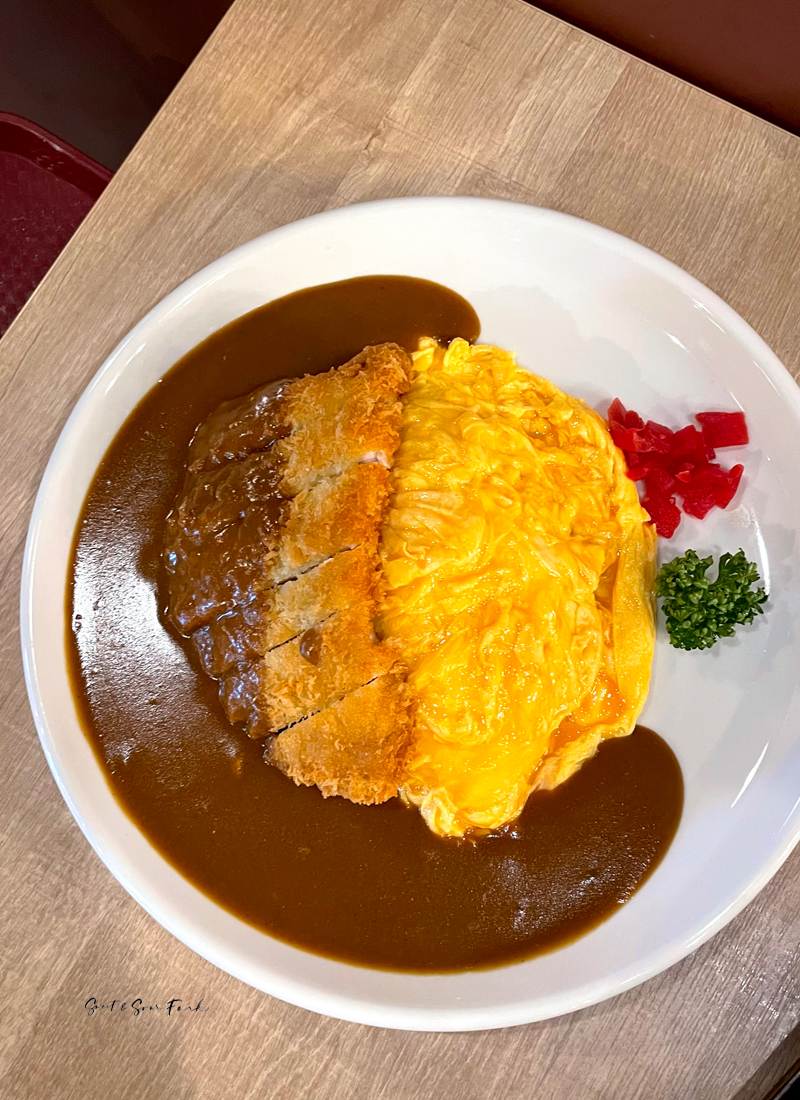
Katsu Curry Omelette Rice (1300 yen)
The yoshoku restaurant, Yokohama Tachibanatei, does a pretty solid Katsu Curry Omelette Rice (1300 yen). Nothing to write home about, and the katsu was a touch grisly at points, but it will fill the stomach.
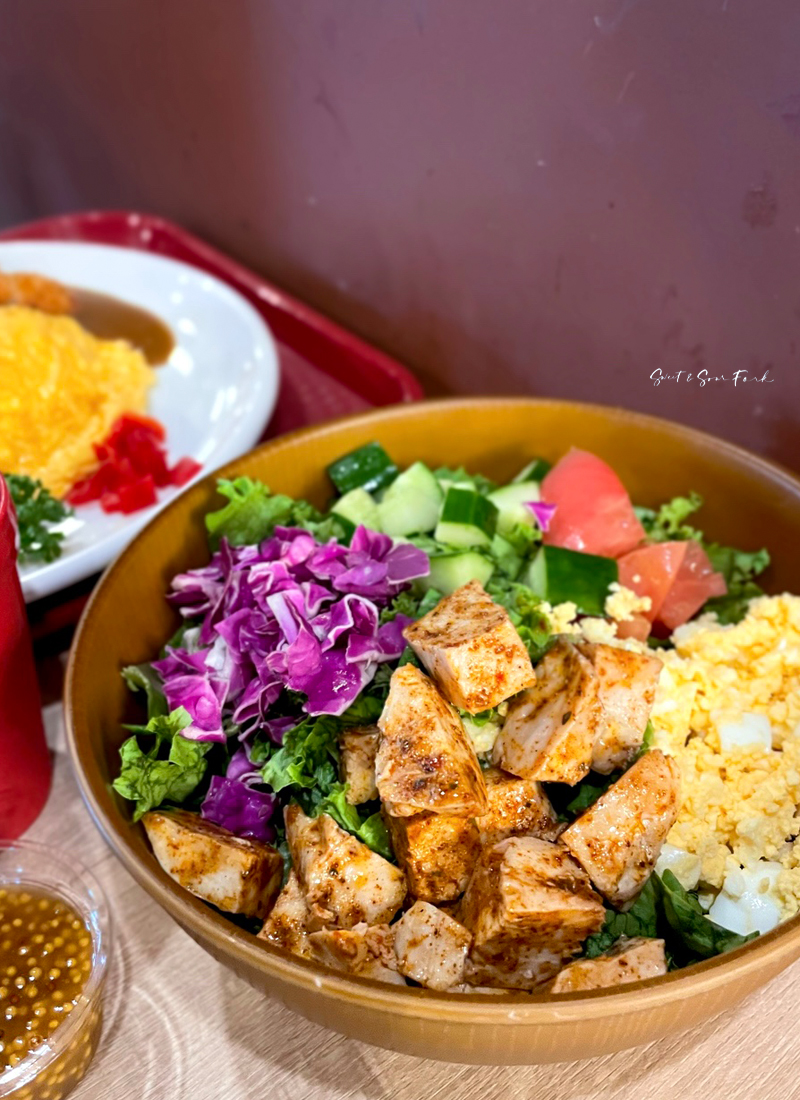
Spicy Chicken Cobb Salad (1390 yen, medium)
Salad! It’s a real salad!! The Spicy Chicken Cobb Salad (1390 yen, medium) from With Green was the first and last ‘proper’ salad I had on this trip. And whilst it’s no different from any other takeaway salad you may get here in Australia, the fact that it even compares already puts it leaps and bounds ahead of anything else in Japan. I absolutely adore Japan, but the lack of greenery is something I will never get used to.
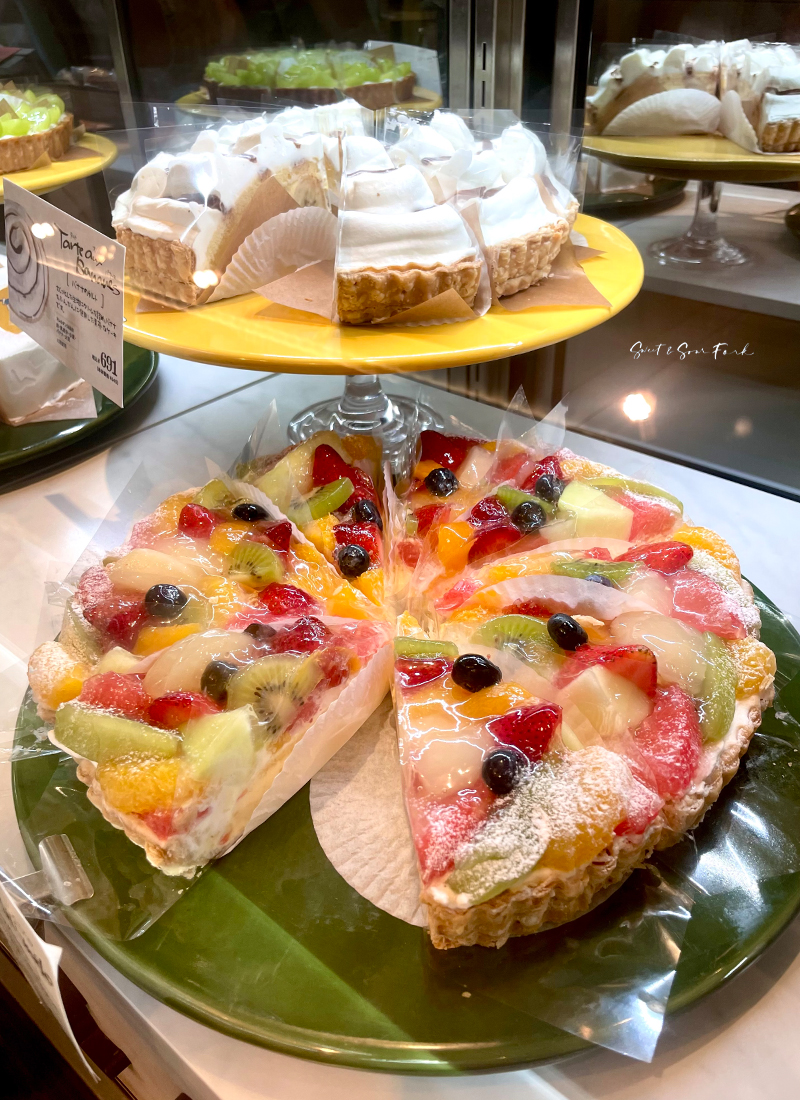
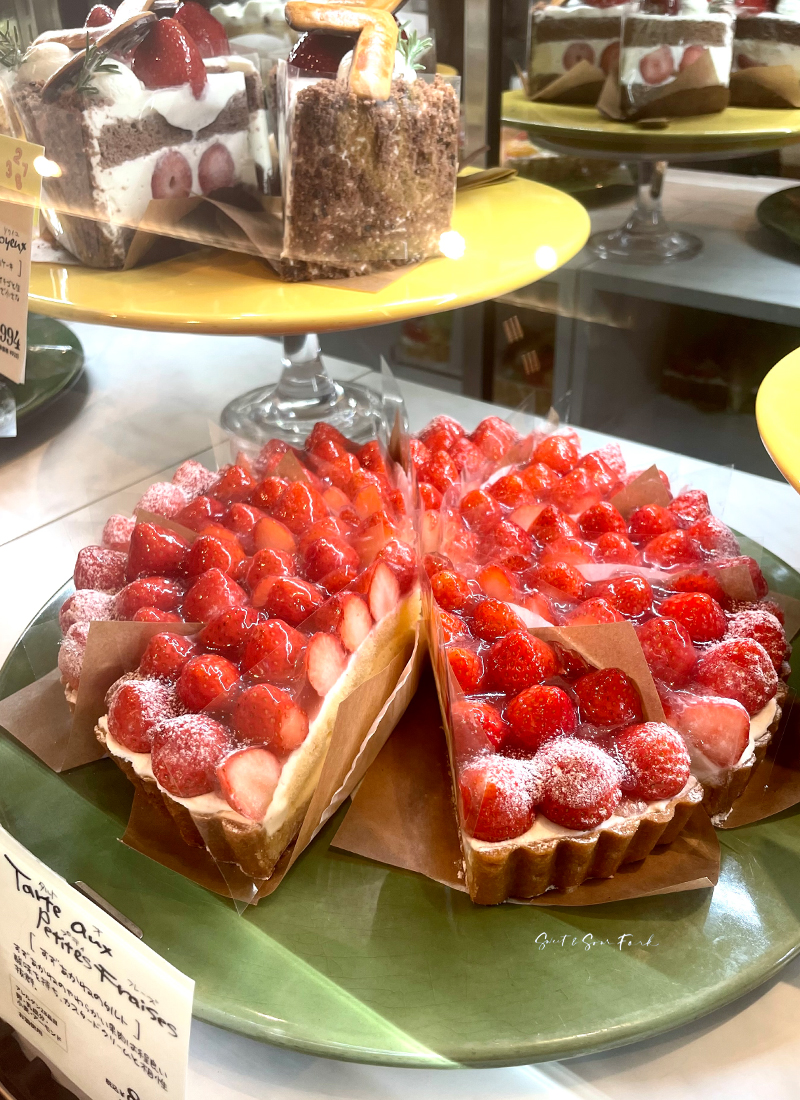
Just try not to stop in front of the display at A La Campagne – it’s absolute impossible. In fact, I stopped by to ogle about 4 separate times during the day before afternoon tea time rolled around, and I could finally gawk at my cake and eat it too.
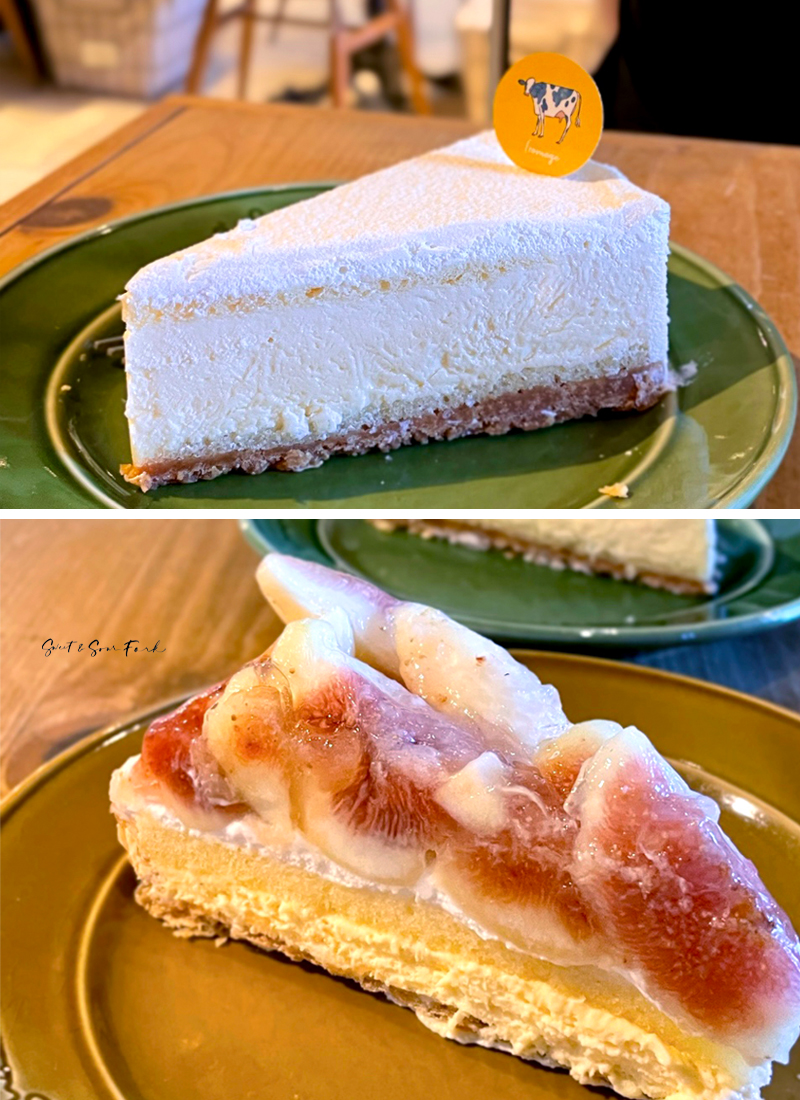
Cheesecake (693 yen)/Fig Tart (880 yen)
The Fig Tart (880 yen) was as lovely as it looked, floral fig tasting extra summery on a mellow custard base. The Cheesecake (693 yen) was super light and milky; good for those who want something not too heavy, but still want that rich cheese flavour.
Kamakura
Ok so Kamakura isn’t actually in Yokohama; it’s a small town half an hour from Yokohama by train – fight me. Don’t actually though, because I’m about to give you a great recommendation: Kamakura is an awesome place to visit, either as a day trip, or even to stay for a few days. There are temples and gardens around every corner, all linked by beautiful (and very walkable) rural streets. The city centre features Komachi-dori street, which hosts a large range of interesting shops, as well as more food vendors than you could eat at in a week. There’s even a beach out on the edges of town, though I didn’t have time to visit this time.
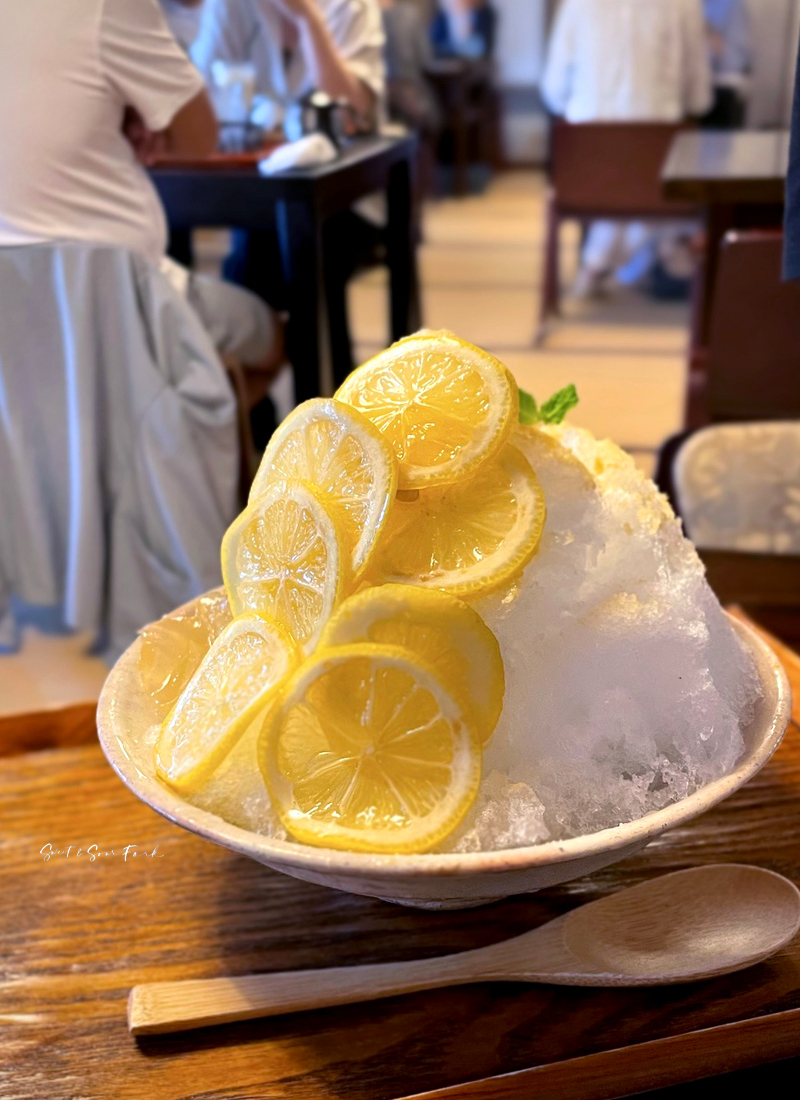
Honey and Lemon Shaved Ice (1000 yen)
All that temple schlepping is hard work, so we pause to cool down in Tenshin-An, a tea house right next to the beautiful Kencho-Ji temple and gardens. The Honey and Lemon Shaved Ice (1000 yen) is delicious, with a subtle floral sweetness, and a refreshing bitterness. The teeny ice crystals dissolve like snow.
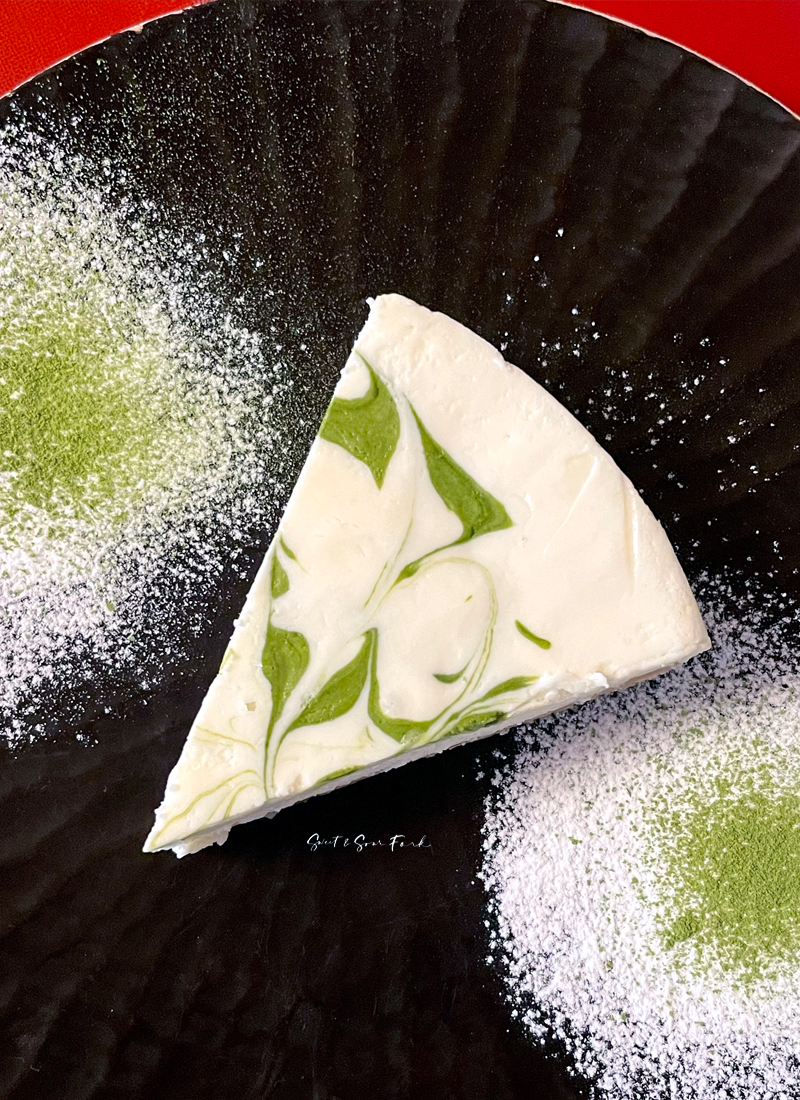
Matcha Cheesecake (620 yen)
Theres a one order per person policy here, so we also get the Matcha Cheesecake (620 yen). This is less impressive, though still a perfectly nice sweet, especially for the price.
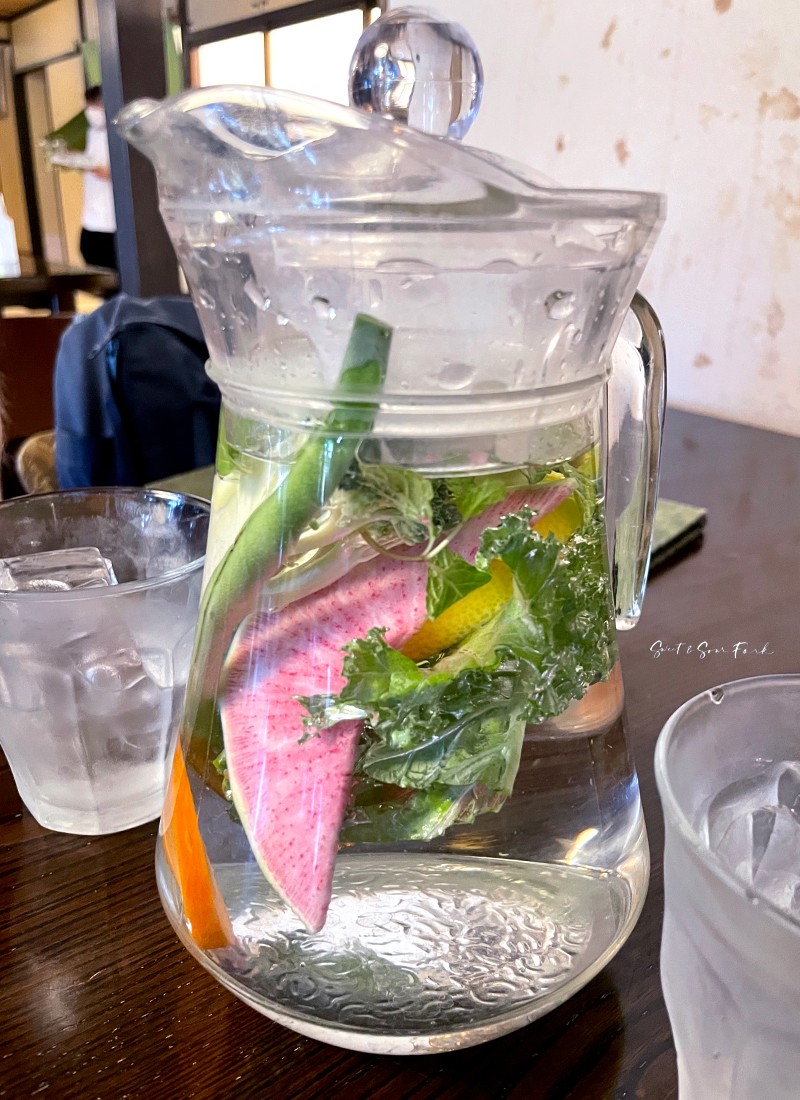
On a side note, this is the most vegetables I’ve seen on the entire trip. If only they put it on a plate, instead of in a water jug.
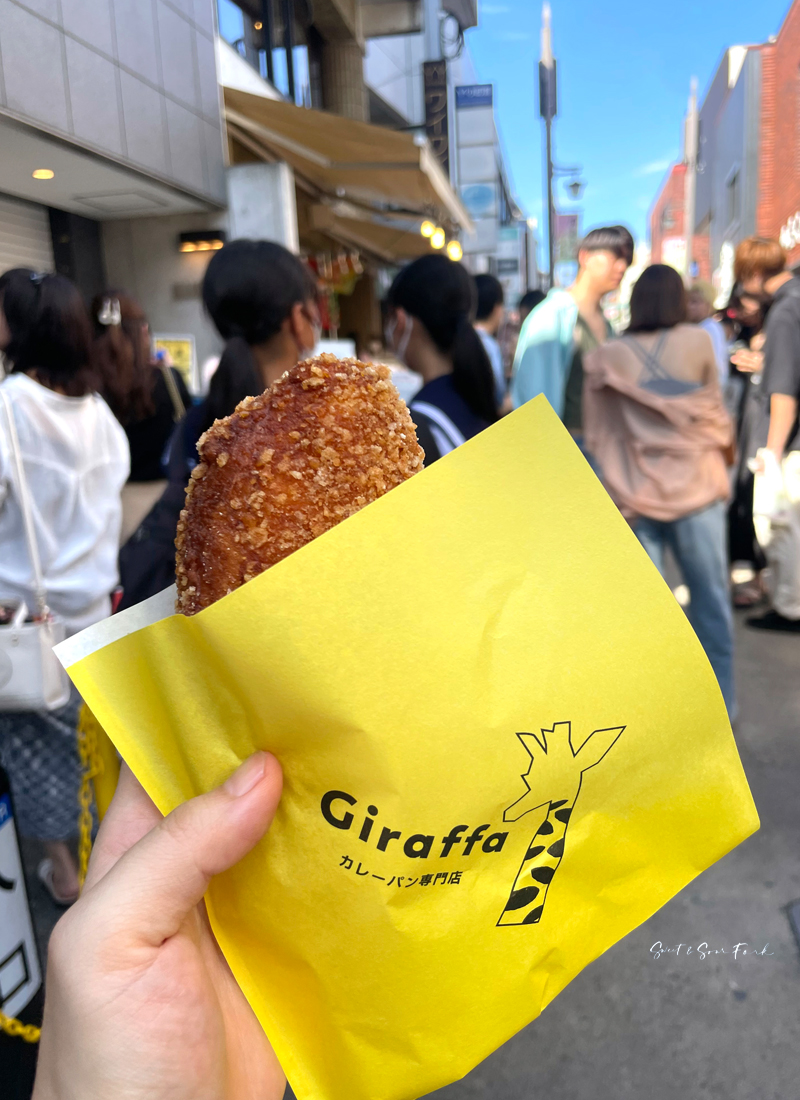
Curry-Pan (400 yen)
We wander back into town, and start eating our way through Komachi-Dori. Giraffa is a highlight with their freshly-made Curry-Pan (400 yen) that is golden and fluffy on the outside, and filled with scalding hot curry sauce and oozy mozzarella in the middle. Just look for the crowd of people eating from bright yellow paper bags.
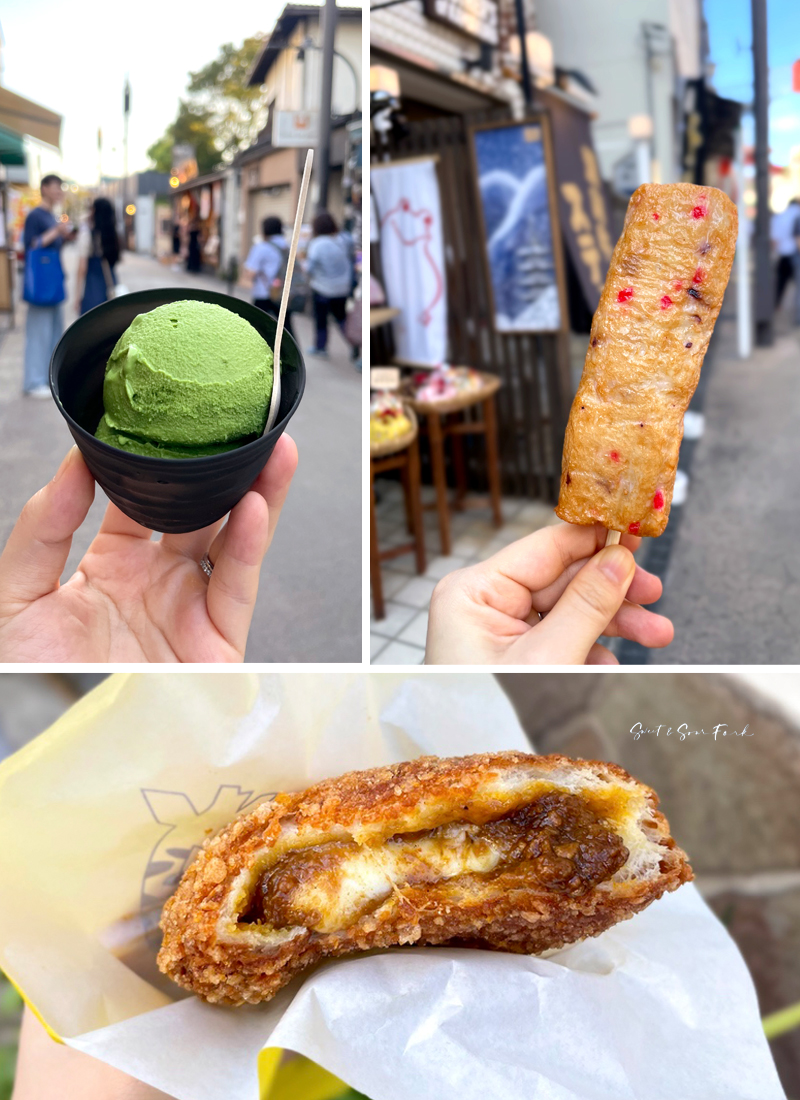
Level 3 Matcha Gelato (590 yen)/Octopus Ginger Fish Cake (400 yen)/Curry-Pan (400 yen)
The freshly made fish cakes are a Kamakura specialty; the Octopus Ginger Fish Cake (400 yen) is impressively light for how dense it is, its flavour reminiscent of takoyaki. For the more adventurous, consider the cheese and crab. For sweets, Kamakura Chacha is my pick. This shop is well known for offering matcha ice cream in 5 different intensities. I went for the Level 3 Matcha Gelato (590 yen), hoping for the best of both worlds. I got exactly what I wished for – the ice cream was infused with a crisp, vivid grassiness; invigorating, but not so strong as to overpower the beautifully smooth and creamy flavour and texture of the gelato. This is as good as any gelato I’ve had, and if I had a few more days, I’d definitely want to give the level 5 a try.
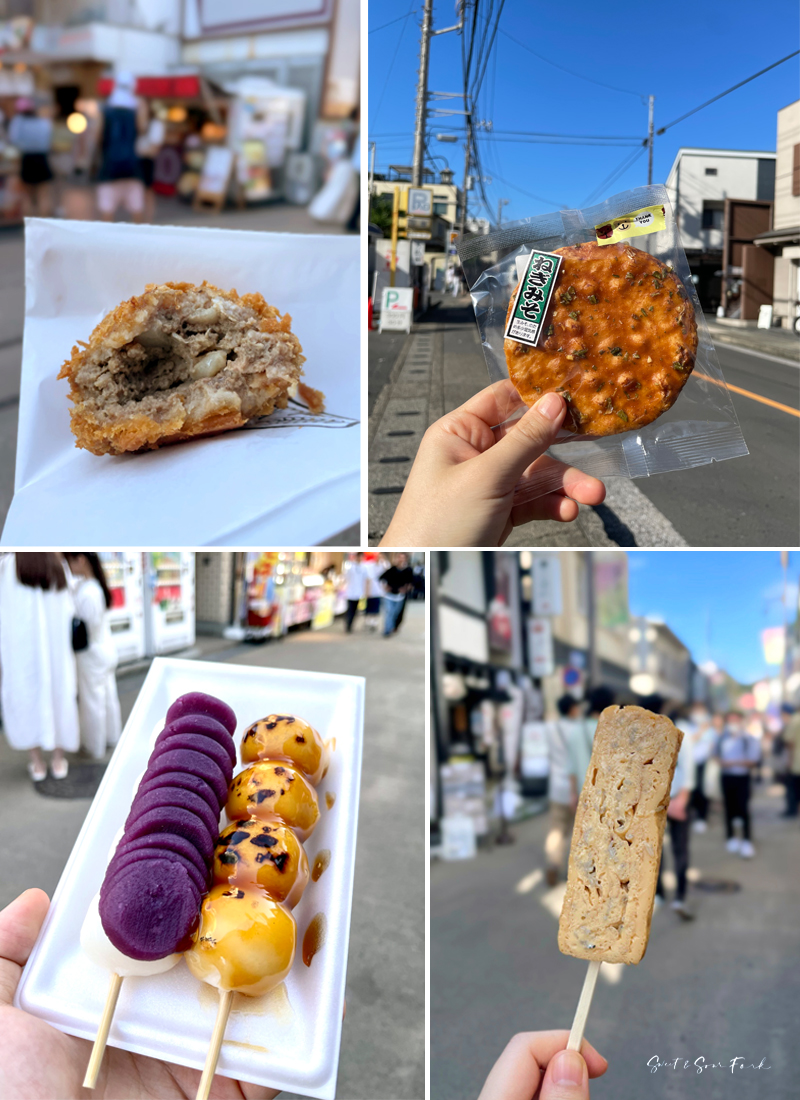
Beef Croquette (350 yeb)/Rice Cracker (180 yen)/Purple Yam Dango (200 yen)/Sweet Soy Dango (!70 yen)/Whitebait Omelette (380 yen)
A few other things I ate whilst I wandered through Komachi-Dori. Less noteworthy compared to the previous items, but not a single dud among them. I will warn however – if you’re getting the beef croquette, make sure you’re ready for something super greasy, because it’s basically a giant deep-fried meatball.

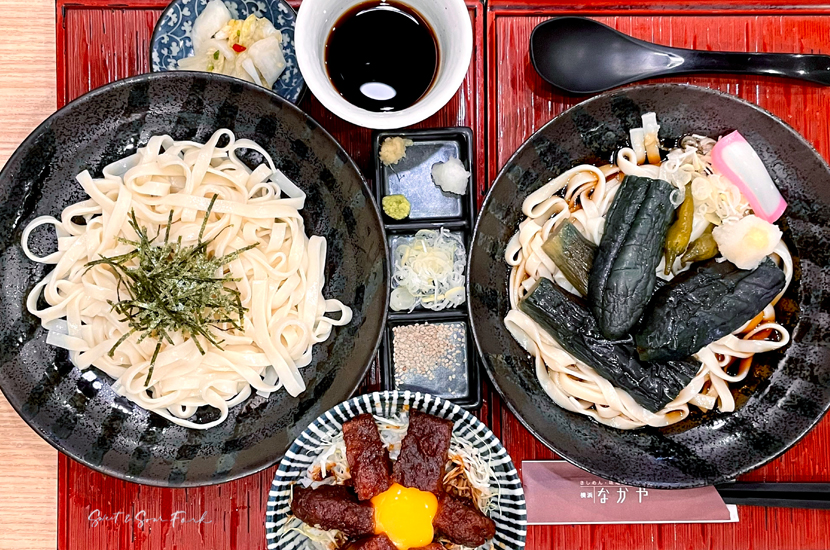
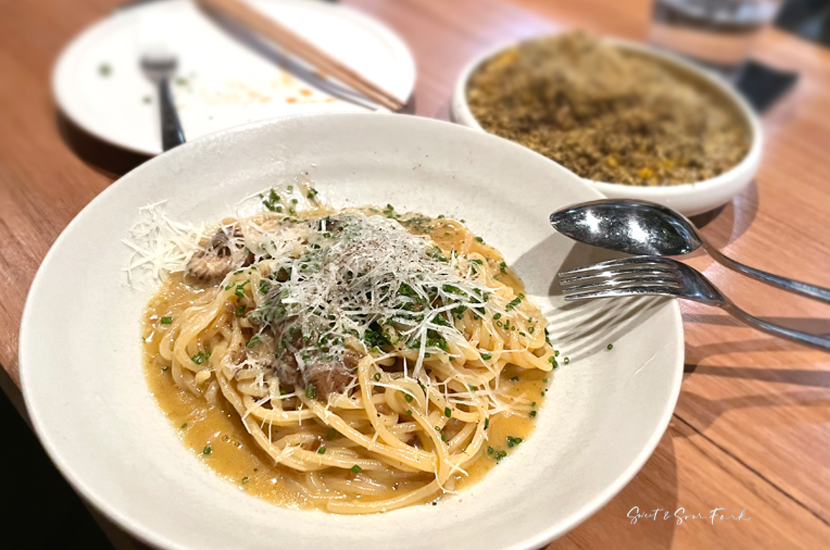

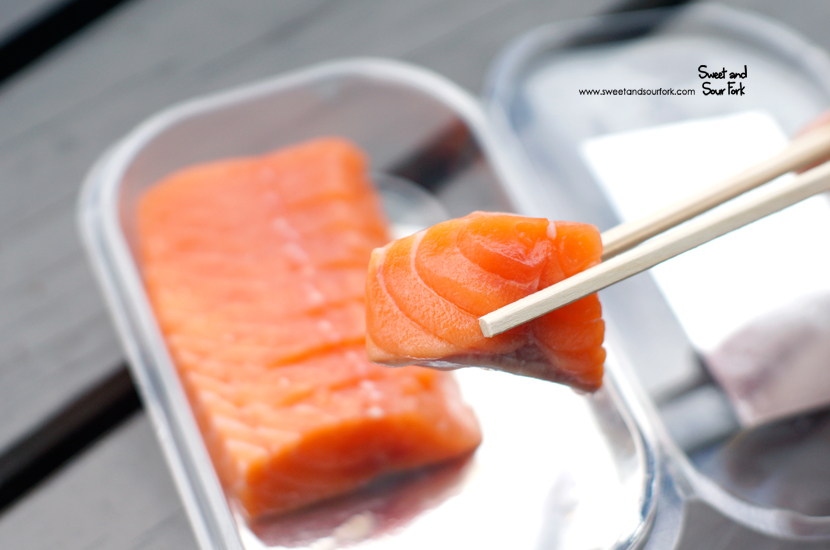
No Comments